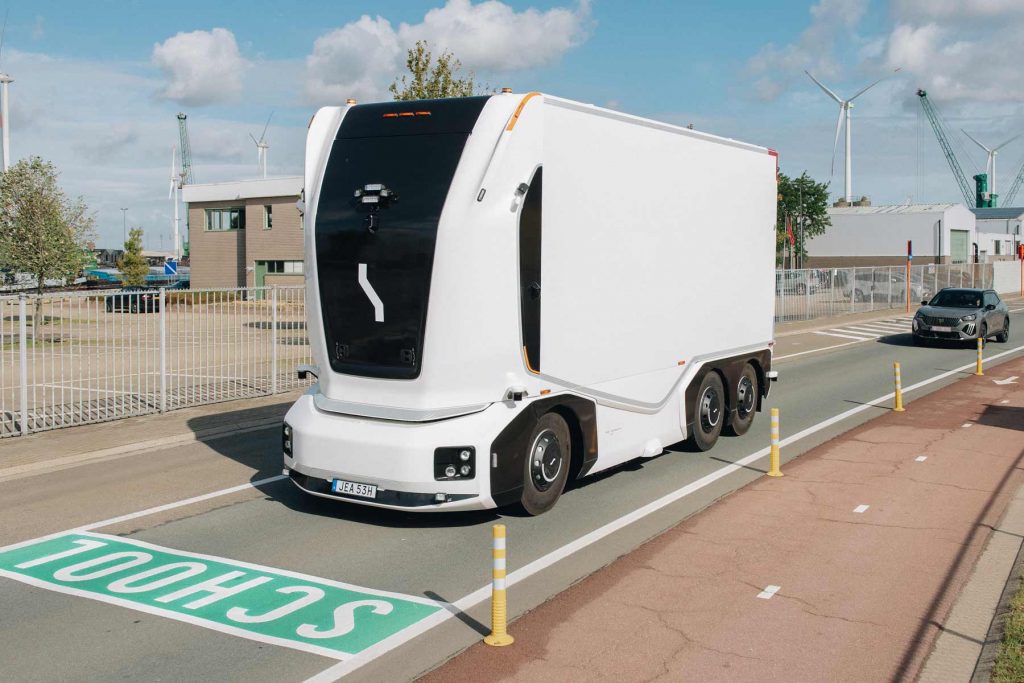Einride is heading for the public markets—and using the announcement to highlight what it sees as a differentiated autonomous freight stack built from the ground up for driverless, electric heavy trucks.

The Swedish company has signed a deal to combine with U.S. SPAC Legato Merger Corp. III in a transaction that values Einride at $1.8 billion and will list the company on the NYSE. Einride wants investors and customers to think of it as a vertically integrated autonomy and electrification platform, not just another trucking OEM.
Cabless by design, autonomy first
Einride’s signature move remains its cabless, electric autonomous trucks—Pods that were never designed to carry a human driver at all. According to the company, its autonomous technology stack is built entirely in-house and specifically for driverless operation, then integrated into these cabless vehicles for commercial deployments with shipper customers.
Unlike most AV developers bolting autonomy onto existing tractor platforms, Einride stresses that its software is “vessel-agnostic”. The same stack can, in principle, be ported to other heavy-duty platforms in sectors like defense and specialized civilian logistics, opening the door to white-label or co-branded deployments beyond its own Pods.
The company points out that it was, to its knowledge, the first globally to secure permits for cabless heavy-duty AV operations on public roads—in 2019 in Europe and 2022 in the U.S.—and says it has maintained a zero traffic-incident record in autonomous operations to date. Those approvals now span four countries across North America and Europe.
Three-modality perception + dual-path driving brain
Technically, Einride is very much aligned with the emerging consensus in heavy-duty AV:
- A three-modality perception stack combining LiDAR, cameras and radar, plus motion sensors and GNSS for positioning.
- All of that feeds into a dual-path software architecture:
- A primary deep-learning model trained for “human-like” driving behavior.
- A secondary, rule-based deterministic layer that acts as a safety and compliance guardrail and underpins the company’s regulatory case.
That explicit separation between a rich, learned policy and a conservative rule set is pitched as key to winning over regulators: authorities can audit the guardrail logic even as the neural network policy evolves with more data.
On the safety side, Einride says it maintains a documented, third-party-audited safety case that it reuses and updates across deployments. The company claims this has compressed its approval cycle dramatically—from roughly nine months for early permits down to “weeks” for its most recent authorizations.
Digital freight platform: AI planning, EV ops and autonomy in one stack
Einride is also leaning into its positioning as a software-first freight company rather than just a vehicle OEM. Its technology platform includes:
- AI planning and optimization for routing, scheduling and load balancing across fleets.
- Management of what it calls one of the world’s largest electric heavy-duty fleets, integrating charging infrastructure and energy constraints directly into dispatch and planning.
- The autonomous stack as just one more “mode” in the system, orchestrated alongside human-driven electric trucks.
In practice, that means shippers buy a service—freight capacity that happens to be fulfilled by a mix of human-driven EVs and autonomous Pods—rather than buying trucks or autonomy modules outright. For the AV sector, it’s another data point that Fleet-as-a-Service plus autonomy is emerging as the dominant commercial model in freight.
Einride’s CEO Roozbeh Charli framed it in the announcement: the company believes it has “proven the technology” and “built trust with global customers,” and now wants to accelerate.

